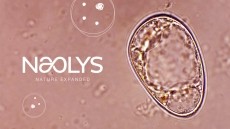'Real-time mapping': Colgate-Palmolive files patent for at-home AI oral health device
![Diagnostic data from the device can then be displayed directly via a consumer app or communicated through a virtual assistant, with recommendations on oral hygiene routines and products [Getty Images]](/var/wrbm_gb_food_pharma/storage/images/_aliases/wrbm_large/publications/cosmetics/cosmeticsdesign-europe.com/article/2022/08/08/colgate-palmolive-patents-oral-health-smart-device-to-track-hygiene-at-home/15665691-1-eng-GB/Colgate-Palmolive-patents-oral-health-smart-device-to-track-hygiene-at-home.jpg)
Writing in its international patent, Colgate-Palmolive said it had designed a digital intraoral device that determined a range of oral health characteristics in users, including caries and plaque detection and functional blood mapping. The device used a light source and a matrix array multispectral sensor to capture spectral images of the oral cavity in the mouth, with results then processed using Artificial Intelligence (AI) and machine-learning technology and communicated directly with the user via an app.
“Technology for promoting a user’s health is known,” Colgate-Palmolive wrote in its patent filing. “In particular, connected health and consumer level diagnostic devices have been used among consumers to improve their long-term health care. For example, biometric devices may be used to ensure users are walking around and moving enough to prevent long-term muscular-skeletal problems and other health conditions. Comprehensive consumer level biometric and diagnostic devices for oral hygiene, however, are not commonly known or available,” it said.
Whilst some oral diagnostic devices existed, the company said they often lacked functionality for improving oral health, such as the ability to detect caries and plaque or monitor hygiene, whiteness, hydration, or tongue bacteria. And few, it said, provided health product recommendations.
“Further, none of the current devices receive input from the user about their current oral health problems or oral health goals. Thus, a simple and easy to use platform that allows connected and automated longitudinal monitoring of oral health is desired,” Colgate-Palmolive said. And its latest oral health device tackled all of this, it said.
Image acquisition and AI diagnostics – tracking real-time changes
Colgate-Palmolive’s use of spectral imaging in its device meant “hundreds of wavelength bands for each pixel in an image” could be captured, all of which could then be analysed by Artificial Intelligence (AI) to observe hygiene, determine tissue health, and/or measure quantitative changes in oral health. Use of a transparent bite bar, tooth rest and/or tongue retractor in the device also enabled the user to place their teeth and tongue securely, promoting “consistent imaging”, it said, particularly when multiple multispectral sensors were attached to the device in different areas.
Importantly, the device enabled “real-time mapping” of a range of oral health aspects, including plaque, potential caries/cavity spots, bleeding tissue detection, teeth whiteness measurements, blood pressure, heart rate, blood flow, ulcers, cracked teeth, over-brushing determination, gingivitis mapping, biofilm, inflammation measurements, receding gums and tissue hydration, and more, Colgate-Palmolive said. The device could also incorporate other sensors to broaden these measurements, such as gas sensors to measure bad breath or temperature sensors for fever detection.
And the personal care major said the device had been designed in such a way that diagnostic results were immediately displayed to a user via a wirelessly connected smart device.
This data, along with other information, such as potential health implications, dental visit suggestions and/or hygiene product recommendations, could either be displayed in a simple format or via a virtual assistant. The latter, it said, could be activated to provide advice on improving oral health, based on AI diagnostics following use of the device, including recommendations on brushing techniques or use of additional oral care products like mouth rinses.
“Improved impact acquisition and AI diagnostics may simplify and/or improve the connected health platform for the user, may allow for longitudinal monitoring of health, may make health recommendations, may improve oral hygiene, etc.,” Colgate-Palmolive said.
It was also possible for diagnostic data to be directly transmitted to a third-party, for example oral care professionals, the company said.
Investment in oral health and disease prevention
Back in March this year, Colgate-Palmolive’s VP and chief clinical officer told CosmeticsDesign-Europe that oral disease was a global health crisis that needed attention and the personal care category had a duty to get involved.
Colgate-Palmolive had, for example, launched a five-year oral health commitment that included a €91m consumer education programme, the goal being to empower consumers to know their oral health quotient or OQ, much like they understood their IQ or EQ measuring cognitive and emotional intelligence.
“There is a huge opportunity to help people understand that a healthier future starts with a healthy mouth,” Dr Maria Ryan said.
WIPI International Patent No. WO/2022/159276
Published on July 28, 2022. Filed on January 6, 2022.
Title: “Intraoral diagnostic device and method of using same”
Inventors: Colgate-Palmolive – HM. Subhash and BE. Urban


![Shopper journeys now blur across online and offline worlds, carving out plentiful opportunities for consumer brands to better engage, learn and innovate accordingly [Getty Images]](/var/wrbm_gb_food_pharma/storage/images/_aliases/wrbm_medium/publications/cosmetics/cosmeticsdesign-europe.com/article/2023/02/28/colgate-palmolive-digital-transformation-focused-on-smart-factories-clean-data-rooms-and-digital-shelf-innovation/16208842-1-eng-GB/Colgate-Palmolive-digital-transformation-focused-on-smart-factories-clean-data-rooms-and-digital-shelf-innovation.jpg)
![The patent outlines a bristle design that Unilever says improves contact with teeth, enabling improved cleaning [Getty Images]](/var/wrbm_gb_food_pharma/storage/images/_aliases/wrbm_medium/publications/cosmetics/cosmeticsdesign-europe.com/headlines/packaging-design/unilever-files-patent-on-toothbrush-bristle-design-for-better-stain-removal/16154405-1-eng-GB/Unilever-files-patent-on-toothbrush-bristle-design-for-better-stain-removal.jpg)












